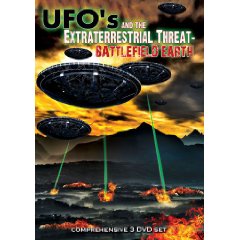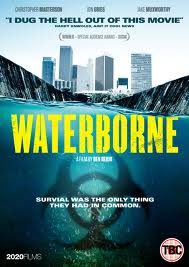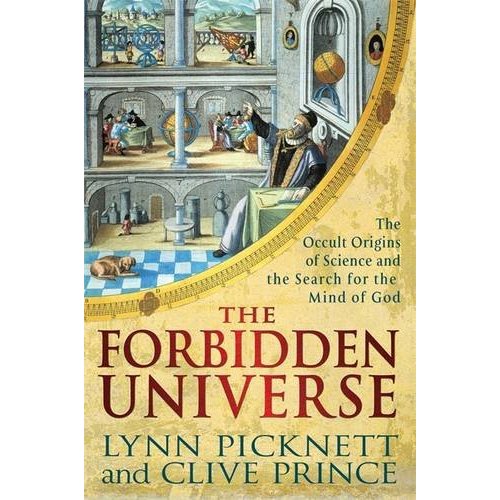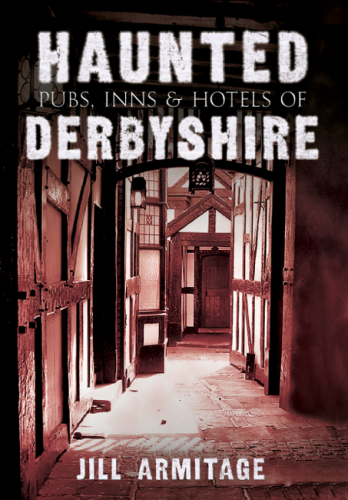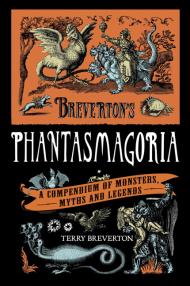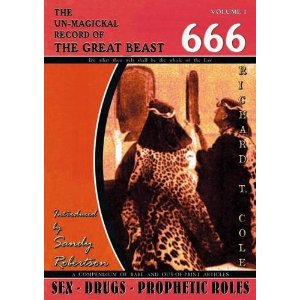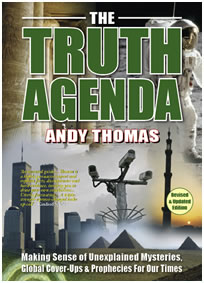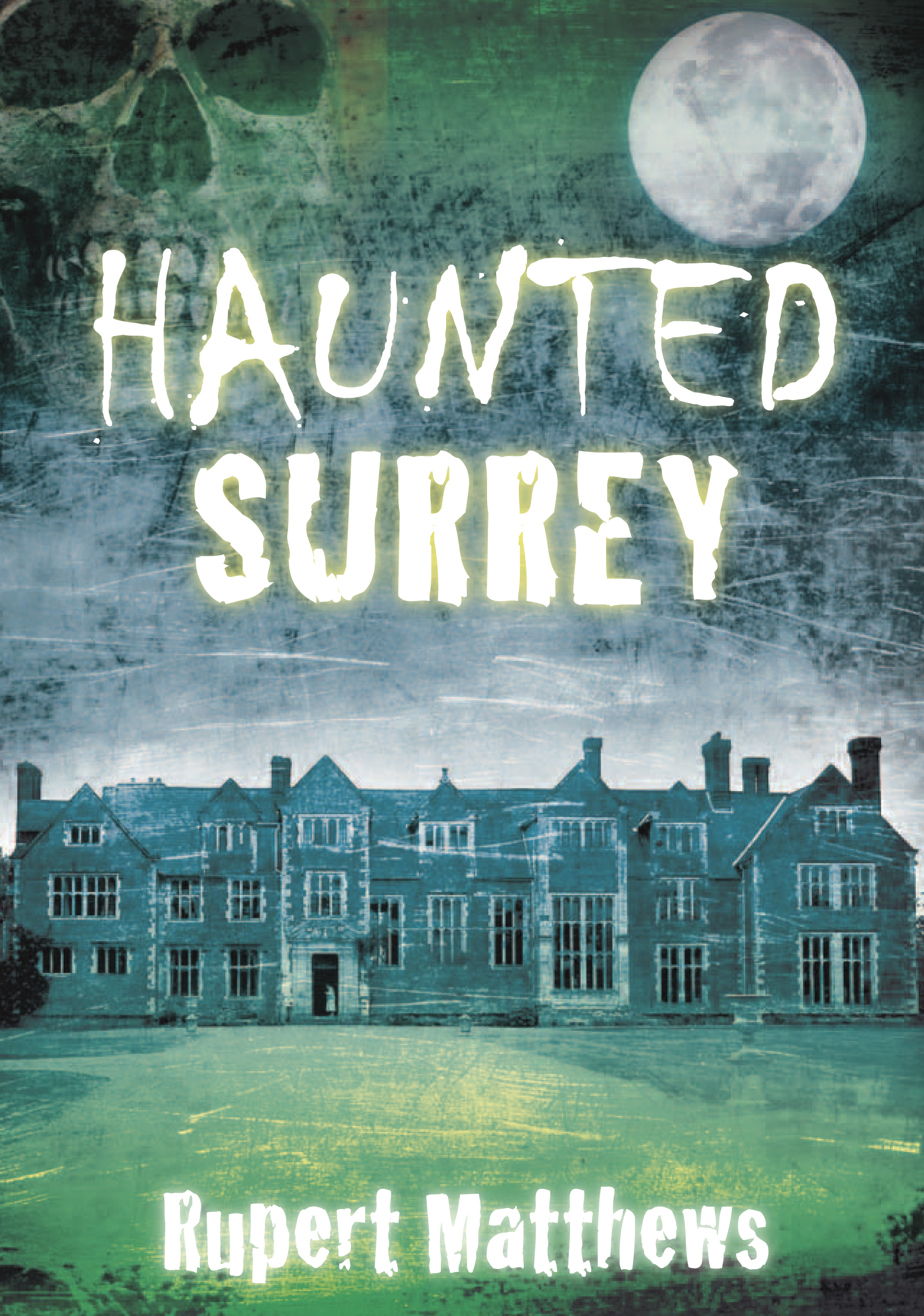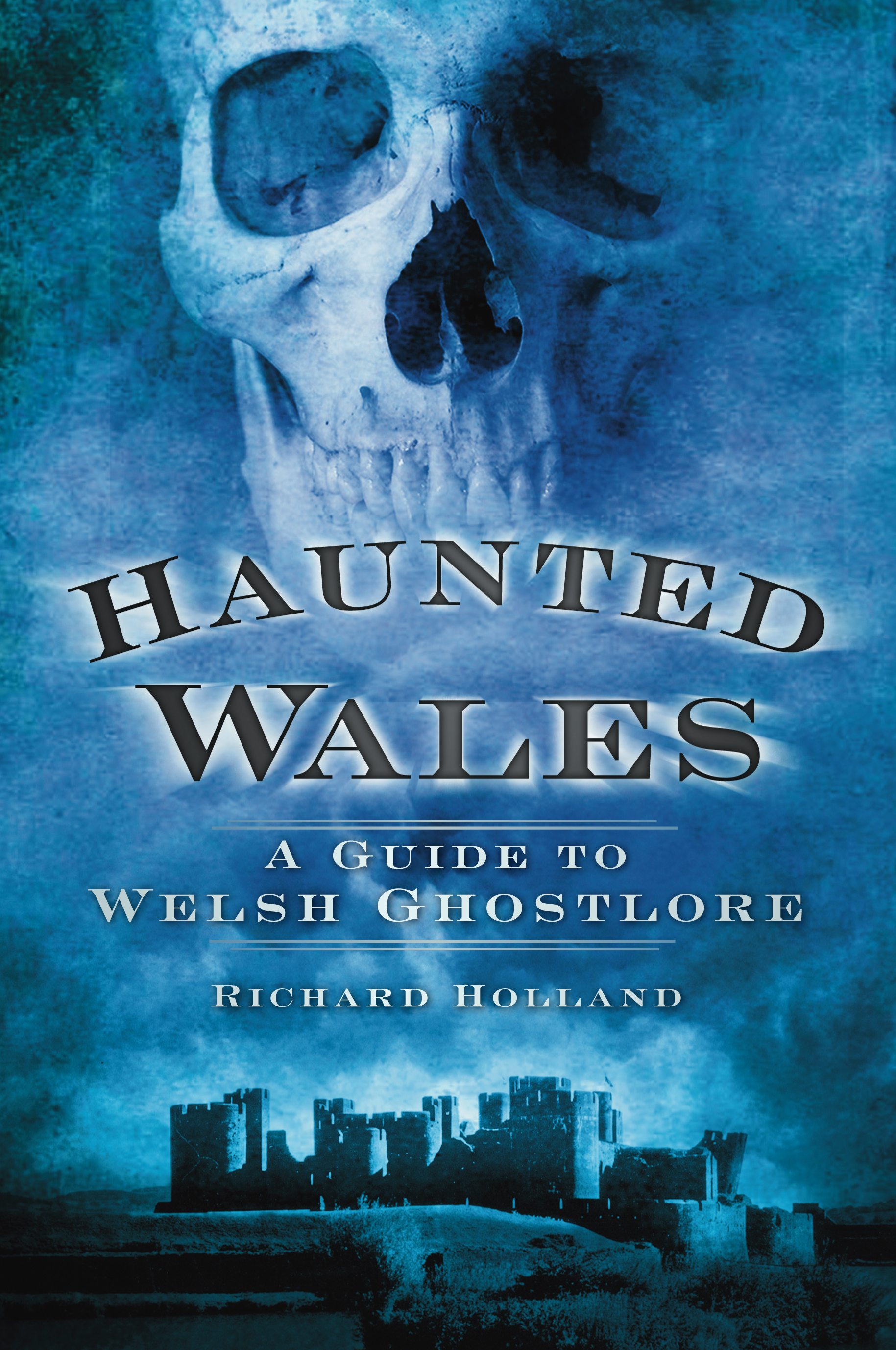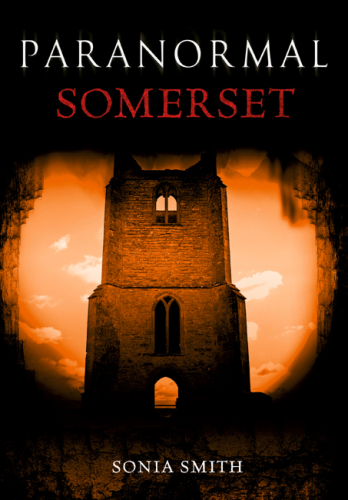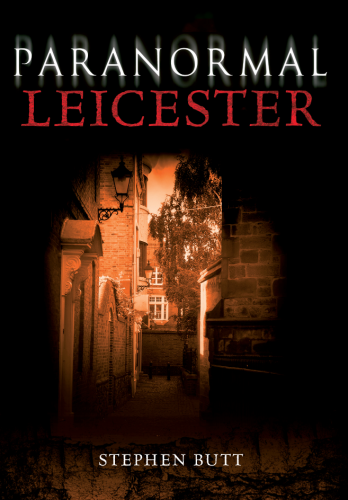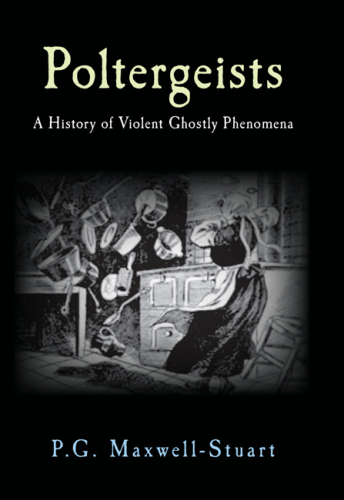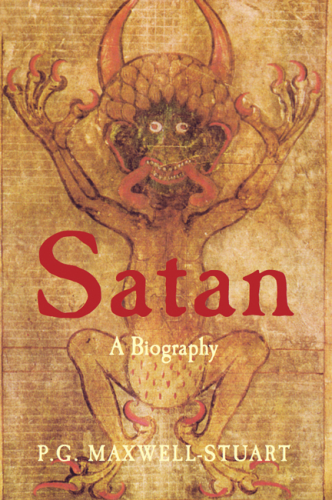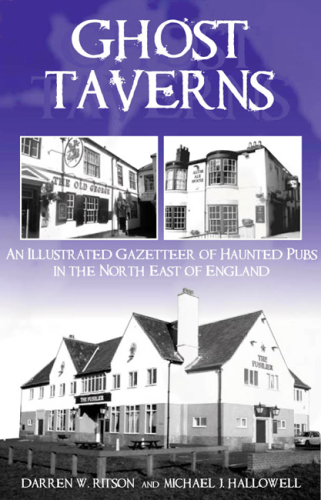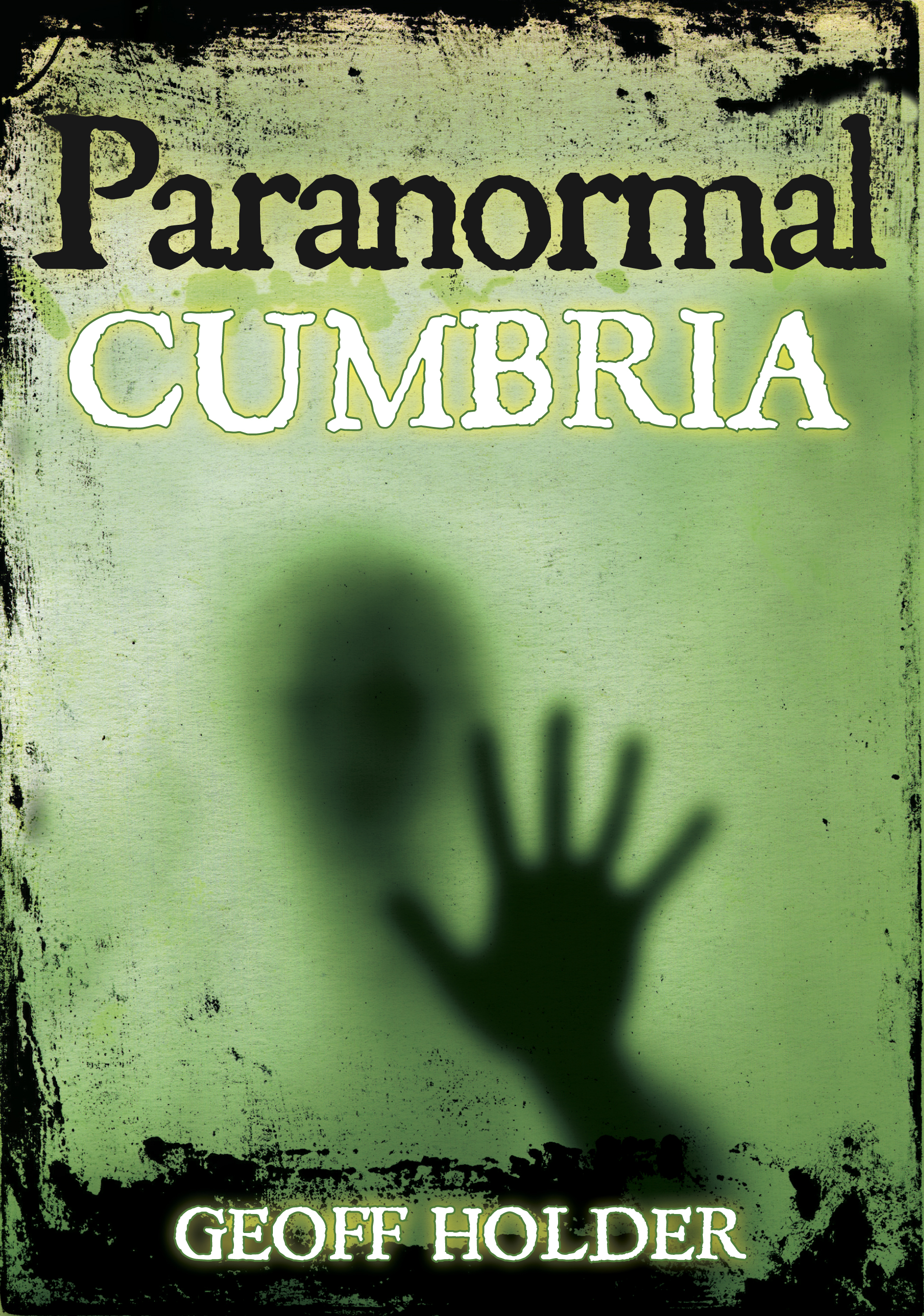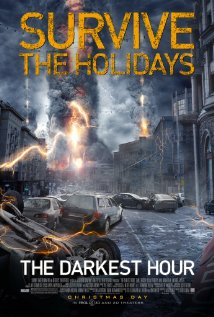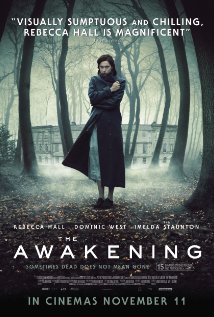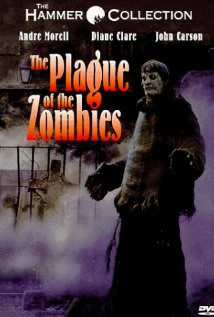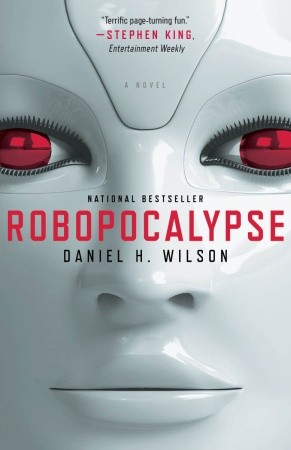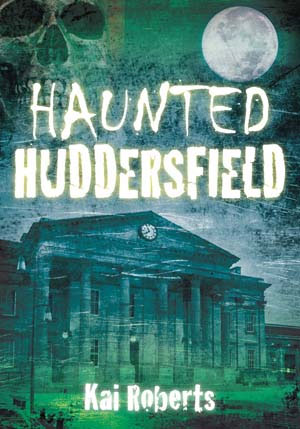
| Quote: “Great spirits have always encountered violent
opposition from mediocre minds.” - Albert Einstein. |
|
|
|
|||
|
|
Below is a list of my reviews done for Paranormal Magazine
|
|||
DVD REVIEW UFO’s
and the Extraterrestrial Threat: – Battlefield Earth
Format: DVD Title: ‘UFO’s
and the Extraterrestrial Threat: –
Battlefield Earth’, Running time: Approx 200 minutes Publisher: World
Wide Multi Media Order number: WWMM 1003 Price : None stated A review DVD came though the letter box dropped onto the floor, and as usual I had quick look at the cover, WOW!! ‘UFO’s and the Extraterrestrial Threat: – Battlefield Earth’, it was a comprehensive 3 DVD as well. The back cover blurb was equally alluring with its fevered comments about enigmatic ‘men in black’; and battles between men and aliens. According to the blurb, governments are concealing all this from you, and on the DVD’s are accounts from world renowned experts in the field giving the low down. From all that it was far to assume that this production just had to be something really special with top class production values, so was it? Well no, not exactly. The 3 DVD set is culled from the back catalogue of EDGE MEDIA TV who transmit on Freesat channel 200 and consists of a number of recorded interviews hosted by such personalities as Nick Margerrison who presents ‘Esoteria’, Ross Hemsworth and his ‘Now, That’s Weird’, and last but not least, Theo Chalmers with ‘On the Edge’. To be fair, some of the interviewees are good and the first disc has material from Esoteria featuring the Ufologist Tony Topping .Tony presents the viewer with anecdotal evidence that he has been hounded by black helicopters for conducting his research into the subject, he does actually present some video film showing one of the helicopters. What is much more interesting are his observations on the matter and he is quite open in stating that the UFO phenomenon contains more than a hint of the paranormal, and as far as this reviewer is concerned he is correct. This segment also contains an interview with a guy, Dennis Richards, who is certain that ET’s removed cancers from his chest. To substantiate this he presents evidence showing that he did appear to have a cancer that has since vanished. He explains that
while in some kind of coma/trance in hospital receiving chemotherapy,
he ‘saw’
tiny ET’s park an equally tiny flying saucer on his chest then climb
down a
ladder and remove parts of the cancer from his chest, taking it into
the
vehicle. What he does know for sure however is that the cancers have
gone and
he has the documentation from the hospital to prove it. A miracle? Well
yes it
is, but it would need much more than an interview on TV to prove it,
because in
any other context this would indeed be a miracle and the ET’s would be
angels.
The disc also includes the Disc two
contains more UFO related material from Ross Hemsworth and concentrates
on a
classic UFO sighting made by airline pilot Roy Bowyer while flying to
the
Channel Islands off the south coast of The third disc is for me the real golden nugget here and is almost worth the price of the three disc set on its own, It features a lengthy interview with Richard D Hall who also presents a show on the channel ‘RichPlanet.net’. This has segments from Timothy Good and Gary Heseltine who both present their individual takes on the UFO phenomenon. The standout section of the third disc that stood out for me was when Richard D Hall presents his 30 secrets of the spiritual dimension to Ufology. This was genuinely thought provoking and covered many of my own views on the subject. The one thing that this reviewer did find off-putting is that the shows are presented ‘as is’ with all the glitches and hitches left in, and these should and could perhaps have been edited out, However, overall the collection is worth viewing and most viewers will take something from it
DVD REVIEW The
Unexplained Explained: Ghosts and Paranormal
Activity
Title: The
Unexplained Explained: Ghosts
and Paranormal Activity Catalogue
Number: WWMM236 Format:
DVD-R Price:
£15:99 Based
on the remarkable outcome of this unsettling and fascinating
documentary
film it would be better titled ‘The Unexplained Demonstrated’ rather
than ‘The Unexplained
Explained’, because this is precisely what happens, but more of that
later.
This latest release from World Wide Multi Media and WeinerWorld is
produced and
presented by a researcher, the initially sceptical Paul Wookey, who
takes us to
Salterforth in the north of So, a suitable setting for an investigation at the supernatural goings on at the Anchor Inn. Paul is joined in his quest by the psychically gifted Diane Howe who, if the documentary is to be believed, has some genuinely remarkable talents. It is always difficult when reviewing documentaries like these to judge just how many ‘spoilers’ to use, because to give too much away would completely ruin the many surprises and yes, terrors, contained in this programme. However there are so many that a few revelations will do no harm. I should emphasise that Paul at no time gives any information to the medium. The present pub dates back to 1655 when the original building was called ‘The Travellers Rest’, a packhorse inn serving the needs of traders passing by, but in its present incarnation has been in use since the 1830’s when the ongoing construction of the Leeds/Liverpool canal caused flooding in the original building, so the new pub was built atop the old. In fact the results of the flooding can still been seen in the original cellars. On arrival Paul meets with another ‘sensitive’ lady who takes him into the cellars explaining that there was a suicide there when a young boy of 14 called Joe apparently hung himself there. She also tells him that there is more than one set of phenomena occurring. In addition there is an interview with the present licensee in the cellars of the current pub who recounts other events which seem to be of the poltergeist variety. He also shows Paul through the original cellars, one of which includes a quite remarkable display of stalactites and a few stunted stalagmites caused by the accretion of minerals deposited by the continual seepage of rainwater. At this point Paul is joined by the medium, Diane Howe, who quickly ‘tunes in’ and does a walkabout in the cellars, one of two such walks. In the first walk she reveals that a ‘great tragedy’ occurred here, but does not elaborate. It is during the second visit that she decides that there was a violent death here. She tunes into the boy and senses that he did not deliberately kill himself, but accidentally fell through the trapdoor in the floor above and died from his injuries. At this point however events start to take a more sinister turn after she correctly identifies the original owner of the building by his full name, this is corroborated, an impressive feat indeed. We also get the first inkling that the ‘great tragedy’ might have several additional layers to it. I could go on detailing a list of the many events, but I’ll fast forward to the astonishing séance conducted at the finale of the documentary when those present, Paul Wookey, Diane Howe and two others sit round a table using the traditional (and extremely risky) Ouija-like method of communication comprising a small tumbler and the words Yes and No. What occurs is impressive to say the least when the original owner starts to communicate and gets angry, very angry and the EMF meter responds accordingly. We discover the additional and unsavoury dimension of sex, revenge and violence…and the murder of a 14 year old girl. The medium manages to move the spirit of the murdered girl to a better place, a place of peace and sanctuary and Paul Wookey justifiably concludes that he is less sceptical than before. Well, what to make of it, this reviewer assumes (indeed must assume) that what is seen is genuine and unrehearsed, because anything else would render the production worthless and show the revelations as a shallow and mean con. What is revealed therefore is truly astonishing and not a little scary, the séance and what transpires is harrowing stuff indeed. Buy this DVD and watch it carefully, because this is exactly how spirit frequently works and it is a prime example of the kind of phenomena seen during investigations of this kind…highly recommended! END Film Review
First
and foremost this is not a horror film; it is a low(ish) budget,
but very well executed apocalyptic thriller about the social and
ethical
effects of bioterrorism on a community living in and around The
story concerns the dosing of the water supply in an area of At first each group seems detached and quite separate, but as the film progresses it becomes clear that at some point they will meet up. The film shows the steadily mounting panic and paranoia among the citizen as water supplies start to run low and how the veneer of civilisation breaks down when naked survival is at stake. There is a scene where two men are caught trying to take water from a reservoir that makes the point admirably. The decision of the shopkeepers to rack up the price of bottle water has predictable effects on the Sikh family when obvious (and predictable) racism rearing its head as the local rednecks are refused supplies. There is an interesting dichotomy here, because the son of the family although adopting the Sikh dress code is clearly an American and has an American girlfriend while his parents cling to their traditions. There is one particularly effective sequence consisting of cut shots of a Sikh religious ceremony interlaced with scenes of unremitting and increasing violence. The climax the film takes place in the family store when all the characters finally converge in a shootout when the more loopy and spaced out of the two slackers pulls a pistol and demands water. All in all the film, although hardly groundbreaking, works on several levels and is well worth watching --Book
Review The Forbidden Universe
Title: The
Forbidden Universe Publisher:
Constable, Authors:
Lynn Picknett and Clive Prince Price
£18:99 ISBN:
978-1-84901-409-0 A new book by Lynn Picknett and Clive prince is normally something to look forward to and The Forbidden Universe lived up to all expectations. It can be very difficult to make frequently obscure and esoteric subjects, something in which both authors and researchers specialise, both interesting and accessible and in this case once again they manage the feat with consummate ease. What makes it even more special is that it contains flashes of ironic wit and humour that serve to illuminate some of the more obscure points. In many ways this book is a natural progression from their previous works, both together and individually, and works such as, ‘The Templar Revelation’, ‘The Stargate Conspiracy’, ‘The Masks of Christ’ and the truly remarkable ‘The Secret History of Lucifer’ serve as stepping stones to their latest, and possibly best, work to date. The first section of the book deals with the early scientists and thinkers and how their theories were gradually accepted as the truth, mainly because the principles upon which their arguments and theories were bases were unarguable. The Church seeing its authority in all matters questioned did not like this and fought a furious rearguard action, but was eventually forced to concede defeat in a prime example of fact versus faith (and sheer blind dogma). At its core the book casts fresh light on the occult origins of science and encompasses such subjects as alchemy, astronomy and mathematics, all of which were regarded with considerable superstitious fear by the early Church fathers. So much so that the pioneering scientific greats such as Paracelsus, Agrippa, Galileo, Copernicus, Tycho Brae, and all the rest ran considerable risk of being branded as heretics and piously murdered for daring to challenge the overweening superstitious orthodoxy of the Catholic Church. Other pioneers like Sir Isaac Newton and Dr John Dee, although professing revolutionary thinking, were less likely to face death from the church, but more from the state who declared the practise of alchemy illegal. It did so on the grounds that an uncontrolled source of gold would destabilise the economy…nothing changes, does it? It was no accident all these characters, particularly Cornelius Agrippa, Paracelsus, Isaac Newton and John Dee, were hermeticists and primarily considered to be sorcerers rather than scientists and as such were viewed with grudging admiration and trepidation in equal measure. The fact that they also used specific aspects of sorcery (and alchemy which was looked upon as much the same thing) in their work added to this impression, but they did so simply because they believed it was effective. The second part of the book deals with what is perhaps the only branch of science that is closest to magick, and that of course is quantum physics where the impossible becomes not only possible, but often demonstrably so. However, as the authors point out, it is not unknown for Newtonian scientists to come out with such foolishness as, ‘Even it was proven I still would not believe it’. The book is very refreshing in that it never loses its sense of wonder at the possibilities offered by the universe and all it contains. The authors also have the chutzpah to take a healthy sideswipe at the dogmatic atheism of such modern luminaries and self appointed defenders against ‘superstition’ as Professor Richard Dawkins. The rabid and instinctive rationalism of Prof Dawkins et all is every bit as much of a religion as the views held by the conventionally religious and is equally as tedious. What this book does do in spades is suggest very plausibly that the universe appears to have an inbuilt function to deliberately both create and support life and that it was designed that way. What the book does not do, however, is say who or what did it and why this should be, it tantalises and teases, it hints and nudges, but leaves the final decision to the reader, and rightly so. One (of the many) electrifying propositions made is the notion that the universe created us, and through us observing it, allow it to exist in the first place, a truly mind blowing concept and only one of many. This is an important book and one that deserves to be read by anyone who has even the slightest interest in cosmology and, yes, magick. I heartily recommend this book to any seekers of wisdom out there and suggest that you go out any buy it now, you will NOT be disappointed.
-- Reviewed by Brian Allan
Book Review Haunted Pubs, Inns &
Hotels of
Derbyshire
Title: Haunted Pubs, Inns & Hotels of Derbyshire Author: Jill Armitage Publisher: Amberley Publishing Price: £12:99 ISBN: 987-1-4456-0464-0 This book, which enjoys remarkably good producing values, might as well be titled Haunted Derbyshire Volume II since it is a logical and welcome continuation of the first book and as such it is a worthy and worthwhile addition. In it the author takes a look at the many haunted hostelries and pubs in Derbyshire and from the number of fascinating tales in the book there must be a fair few. Just why these kind of establishment should achieve such a reputation for ghosts and apparitions is hard to say, perhaps it’s due to the number of people who have visited over the years and left some trace of their passing. On the other hand perhaps they have been the scene of many tragic and traumatic events, especially in some of the older hostelries that served a dual purpose as mortuaries and even jails. Or might it be due to the fact that almost all the buildings are licensed premises and already contain spirits (in bottles) and when the two are mixed might one kind of spirit beget the other? The book, which is profusely illustrated, draws on tales from many of the towns and villages in the county alphabetically from Ashborne to Wirksworth. Many of the ghostly accounts are taken verbatim from the eye witness testimony of guests, passers-by and residents, while others are based on apocryphal tales and hearsay. Whatever the source there is more than enough information contained in these pages to whet the appetite of the most discerning and jaded aficionado of the supernatural. Unrequited love, suicides, murders, phantom animals, poltergeists, noisy phantom children, disembodied voices and even the shade of a long dead Roman soldier: they’re all here. While this book will obviously appeal to the local tourist board and the book shops in the local towns, equally it should serve as a handy guide for local groups of ghost busters seeking projects. The phantoms described here have a good deal of provenance and indeed several have already been evaluated by a few investigative groups, and these investigations have unearthed some interesting results which are included in the book. Every
county, shire, town and village throughout the -- Reviewed by Brian Allan
Book Review Breverton’s Phantasmagoria: A Compendium of Monsters Myths and Legends
Title: Breverton’s Phantasmagoria: A Compendium of Monsters
Myths and
Legends Author:
Terry Breverton Publisher:
Quercus (History) ISBN:
978-0-85738-337-2 Price:
£9:99 When I first looked at the cover of this remarkable book I was instantly reminded of an old TV show called ‘The Good Old Days’, which ran from 1953 until (amazingly) 1983 and was presented in the style of Edwardian/Victorian music hall entertainment. The show was introduced by an evening suited, white gloved, host cum compere cum interlocutor who presented each act to the suitably dressed audience with a great flourish and in a typically florid manner, saying something like, ‘Ladies and gentlemen, for your edification, enjoyment and delectation may I present a truly perspicacious prestidigitator of legerdemain and flirtatious flummery’. And whatever the act was (in that case a conjuror) duly appeared and did their stuff. That was my first impression of this absolute gem of a book, and what’s more it does exactly what it says on the cover. It is a work stuffed full of facts that the reader can browse and dip into at random and be guaranteed to unearth some absolutely fascinating nugget of information about one of the many and unlikely subjects it covers. It is laid out alphabetically in eight discrete and lengthy chapters as a dictionary of the bizarre and unexplained. In fact some of the subjects are so far ‘out there’ that it is unlikely that being alphabetical would be of any help since they are probably unknown to the reader in the first place, and this is what makes it doubly fascinating. This is a treasury of the strange, the mystical and the anomalous, it is something that Charles Fort himself would have both admired and desired. In
these pages are everything from Adam and Eve through Wolves and
Werewolves to the lost city of ‘Z’ with everything you can think of,
and much
you probably cannot, in between. We find deathworms, mythical monsters,
ghosts,
mythical lands, strange and anomalous artefacts, fabled lost treasures,
alien
abductions, UFO’s (yes, them too), minotaurs, magic, boogymen, fairies,
dragons
and flying carpets. There is also information about some of the truly
scary
beasts that emerge from One item in particular that caught my eye was a truly fascinating piece about honeybees. The author has unearthed some astonishing information suggesting that bees can actually ‘see’ more in than one dimension. He presents evidence that the ‘waggle dance’ performed by returning worker bees laden with pollen to give directions to their hive mates demonstrates this. According to the author, a mathematician called Barbara Shipman has developed a theory about a six dimensional mathematical concept called a ‘flag manifold, (no, me neither), and when these objects are presented in two dimensions they are identical to the patterns formed by the ‘waggle dance’. I would have bought the book for that alone and never mind all the amazing rest of it. I have no hesitation in recommending this work to anyone who has any interest at all in the strange and the bizarre, the forgotten and the fabulous, it’s all here in one scintillating volume: go and buy it NOW!.
-- Reviewed by Brian Allan
Book Review The
Un-magickal Record of THE GREAT
BEAST 666 By Richard
T. Cole
Title: The Un-magickal Record of THE GREAT BEAST 666 Author: Richard T
Cole Publisher: ISBN: 1-900962-85-3 Price: None
stated Many
biographies (and one that was almost a hagiography) have been
written about the late and notorious magician Aleister Crowley and your
reviewer has read a couple, but this is the first time I have seen a
work about
the man presented in such a unique fashion. The book is in A4 format
and runs
to 277 pages, rather than just another biography the complier has
chosen to
gather and collate a creditable number of magazine articles about The
only deviation from this, (and when discussing The
book successfully shows that although he could have faded into
obscurity after his death in 1947 while living in straitened
circumstances in a
The
reportage in the articles ranges from agenda driven vilification and
hatchet jobs, one by an individual who, given his speciality should
really have
known better, to half decent attempts at presenting the known facts
about
Crowley. This second approach allows the readers to make up their own
minds,
and that, in this reviewer’s opinion, is the only way to approach
frequently difficult
areas of interest like this. The subject of magick in general, quite
apart from
It
is possible, even likely, that the magical system developed by
Aleister Crowley, (Thelema or will), might even actually work. It is
after all
another version of chaos magick, which operates by using much the same
method,
i.e. imposing your will on the external world to make it conform to
your
wishes: and that is more or less how However,
all that aside does the book work? Well yes, in the main it does,
but, and there is inevitably a ‘but’, what these sometimes lengthy
articles
reveal is that although they seem to agree on the majority of the facts
about
the life of the mage there is considerable divergence (or lack of
research) regarding
some points. For example, one article gives the impression that There
is one thing that is certain and it is that Aleister Crowley, although
was extremely charismatic, could be absolutely charming and possessed a
ready,
if acerbic wit, was not a ‘nice man’ in any conventional sense, far
from it.
One article quotes one of his associates, (it is difficult to discern
whether
he actually had friends), as saying that There are a few ups and down in the book, after all the same story can only be told so many times, but where this work really scores is in that it is not a dedicated biography and presents a palette of impressions on the life and times of the mage. I have no hesitation in recommending it as a worthwhile addition to the bookshelves of both the avowed Crowleyfile and those who are just testing the water. -- Reviewed by Brian Allan Book Review The Truth
Agenda
Title:
The
Truth Agenda Author: Andy
Thomas, Publisher:
Vital
Signs Publishing Price:
£14:75 ISBN:
978-0-9550608-1-6 A popular aphorism is that no busses arrive then three arrive together, if that saying could be applied to a book it would be this one, ‘The Truth Agenda’, except that in this case they all arrive morphed together in one spellbinding volume. This is evidently the revised and updated version of the original and not having read the first version this one hit me with the force of tsunami. This is a hefty and abundantly illustrated tome comprising some 385 pages, which include comprehensive notes, references and an invaluable index and indeed it has to be to cover such a dazzling array of subjects. Where to start? I say this because a full in-depth review would run to many thousands of words, so it behoves this reviewer to select what, in his opinion, are only a tiny sample of the more pertinent items. In this book Andy Thomas, a well known and respected author and speaker on the conspiracy/mysteries lecture circuit, presents his take on how entire populations are manipulated and controlled by a variety of means for the benefit of small cliques of individuals whose self-serving motives are not in the interests of the rest of humanity. The
book is in four sections and as Thomas sets out his stall the opening
sections show how there is a powerful ruling elite using various
carefully
selected techniques to ensure blind obedience though a logical series
of events
that have become almost iconic in their effect on the human psyche.
Everything
is here from the ancient enigmas of the pyramids through religion and
miracles,
the three secrets of Thomas highlights such charismatic preachers as Ted Haggard (although there are many more of a similar ilk) and shows how he, for all his manifest faults, may have influenced the decisions of the Bush administration. It becomes very clear that evangelical Christianity and politics are an extremely potent, flammable and dangerous mix. We discover that Armageddon in one form or another and the unusual concept of ‘The Rapture’ is at the forefront of the ideals of religious zealots at the highest levels of government and that that its advocates bellow their prophecies of destruction to anyone who will listen. Sadly, the ultimate aim of these groups is absolute control and as this meticulously crafted book clearly shows, there are many ways of doing this. The tools include such tactics as a burgeoning and pointless health and safety culture that seems to have developed in parallel with the equally dispiriting and mind numbing policy of political correctness. Of these two effective methods (and they are effective because the power brokers are in thrall to them) of thought control, it is perhaps the second that is the most pernicious. Why? Because, encouraged by a controlled media, it demonises anyone who dares to think outside the arid strictures of its enforced orthodoxy. It acts almost as an analogy for Orwell’s dystopian, although strangely prophetic novel, ‘1984’ with its ‘thought police’ who altered historical records to fit their manufactured ‘truths’. From this we learn that information, disinformation and its control and dissemination are absolutely vital. Another useful method is through instilling an abiding and paralysing fear in entire populations and as this book shows this does not necessarily mean fears of war either, although it certainly helps. As Frank Herbert said in his seminal novel ‘Dune’, ‘Fear is the mind killer’ and this is a fear that instils a gut level terror about setting foot outside ones own door, which of course promotes the case for a surveillance society such as we have now. The book makes in clear that the events following such abominations as those committed at the World Trade Centre have virtually paralyzed the world through fear. Apparently this fear can only be assuaged by ever increasing infringements of our basic rights and freedoms. Incidentally the section devoted to 9-11 is one of the clearest and most concise I have ever read on the subject and is a prime example of how issues like this should be exposed. There have been books like The Truth Agenda before, but none of them possessed such an instinctively visceral and accessible understanding of their subject as this one, something which quickly enfolds the reader. Andy Thomas has been very astute in how he presents his proofs; rather than coming down heavily one side or the other, what he does is reveal how to apply the truth agenda to what the authorities tell us. When we do that, and it can be far from easy, in many cases the official truth is shown to be nothing of the kind. He demonstrates how seekers after the truth are frequently portrayed as deluded and crazed in an attempt to discredit what they say and do, but how they can nonetheless make things very uncomfortable for those in power. He sets out the facts and leaves it very much to the individual to see what steadily becomes blindingly obvious. In the closing sections, like the instinctive orator that he is and oddly enough it is a technique similar to those used by instructors in the armed forces, (surely an example of ‘why should the devil have all the best tunes’?) he sets about showing how we can actually change the culture of negativity into something useful and positive. Through positive thinking, something that has been demonstrated time and again, we can do something about it and turn it right back on those who create it, and in the opinion of this reviewer there is no reason why it should not work. My advice to you is this; if you only buy one book this year let it be this one, buy it, read it, absorb it, understand it and then get angry…very, very angry, but channel it into something positive, for the future is still malleable and you have the power to change it. Reviewed
by Brian Allan BOOK REVIEW
Title: Haunted Author: Jason Day Publisher: The History Press ISBN: 978-0-7524-6056-7 Price: £9.99
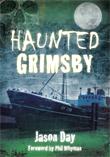 Scunthorpe born
Jason Day, who currently hosts the White Noise Paranormal Radio Show, has
produced another collection of paranormally themed tales for the History Press
about the busy seaport of The book, which
really does need a contents page, is otherwise sensibly laid out with a short
introduction about the origins of town itself, plus of course a brief bio of
the author. There are many truly alarming tales of various lengths contained
here ranging for the mundane to the terrifying and the item with the greatest
potential to terrify is that of ‘The Evil Spirit’. The regrettably short item,
which numbers no more than a couple of hundred words, describes the horrific
events that occurred on a section of railway track between Fortunately sseveral of the books longer items, such as the ‘Grimsby Scratcher’, detail accounts that also create spine chilling sensations in the reader; more so because they happen to be accurate. This account set in 2007 tells of a series of events that befell the Sayles family, who were fans of the TV series ‘Most Haunted’ decided to attempt an experiment in automatic drawing, something that apparently opened up some kind of ‘portal’ permitting malignant entities access to the physical realm. This state of affairs lasted for some time and culminated in a form of exorcism, now in these PC times sanitised as a ‘cleansing’ that seemed to remove most of the malign influences. That said it was not until the family moved house that the phenomena ceased entirely. Perhaps this should serve as a warning to individuals who become attracted to sensationalist TV shows like ‘Most Haunted’ and its ilk. This, as the author will be all too well aware, it not a subject to be treated as a sideshow or an entertainment for the masses, this is potentially dangerous stuff and should be treated as such. There are an
abundance of such cautionary tales in the book, several the results of actual
investigations, and it is the Jason Day’s credit that they have been collected,
collated and presented here. The book is abundantly illustrated using
photographs an also nicely produced sketches (many by the author) of some of
the events described. Since it features many first hand accounts and
investigations (some remarkably recent) it almost acts as a handbook for the
investigator and serves the area around
BOOK REVIEW By Rupert Matthews Title: Haunted
Author: Rupert
Matthews Publisher: The
History Press ISBN: 978-0-7524-5634-8 Price: £9.99
The The book is
subdivided into five sections starting with the As usual haunted hotels and pubs abound as do old and distinguished stately houses, but for me the most interesting was the Marquis of Granby where, supposedly a poltergeist was banished into a first floor cupboard and the door jammed shut with bible. Evidently it has not been touched since! True to form, the Knights Templar, that enigmatic order of warrior mystics also appear, this time by association with the White Horse Hotel in Dorking, however it is not the mpnks who are creating the problems in this premises. Evidently the building has a number of ghosts, one being Charles Howard, the 11th Duke of Norfolk and the other is the unearthly guest in room 16. The book succeeds in offering a potted history of the individual buildings and locations in each area that are haunted and this does help quite a bit as regards background information. There is nothing worse in books of this kind than being told that such and such a place is haunted with no sense of context, so that is definitely a plus point. The book itself is decently produced but not especially long, and as with so many of its ilk should find it natural location in the local libraries and tourist information offices> if I have one gripe it is not with the text but rather with the way in which the graphics are set out. The monochrome images (and there are many) have been inserted with variety of rather irritating additions. These comprise paper clips and stick tape plus ‘hand drawn’ arrows and these only serve to detract for the work, which, in the opinion of this reviewer, would have been much better served using standard formatting; but that’s a matter of taste I suppose. I would
recommend this book to anyone who has previously come across the work of Rupert
Matthews and also to those who desire some knowledge of the unearthly side of
BOOK REVIEW A Guide to Welsh Ghostlore
Title: Haunted Author: Richard Holland Publisher: The History Press ISBN: 978-0-7524-6058-1 Price: £12.99 This new book for the History Press is penned by none other than the former editor of Paranormal magazine Richard Holland. In the intro Richard loses no time in informing the reader that he was the last editor of your favourite magazine before its demise: demise? surely some mistake? Since you are reading this in Paranormal, to paraphrase the late Mark Twain, clearly rumours of its demise have been greatly exaggerated! Anyway, a minor issue, so to the book itself. This is a fair sized volume and at 240 pages packed full of information certainly bigger than many of its genre. The book opens
with a survey of ghostlore, in this case applied to the titular There are of course localised differences in the book, for example ‘ghost laying’ as opposed to exorcism, although the end results are identical and an unquiet spirit is laid to rest, normally much against its will. Rather than the usual index at the back of the book, most of the usual suspects are laid out and helpfully categorised in a delightfully logical fashion. Poltergeists (a perennial favourite), phantom ladies of various hues, white, grey and green and also ghostly females wearing more sinister black dresses. There are also ghostly monks and nuns, phantom armies, fiery ghosts and strange unidentifiable glows, even the rather more worrying ‘ghosts of the living’ are represented here, something that, given the implications, deserves much closer attention. A large section of the book is devoted to a menagerie of phantom animals and these consist of much more than the almost mundane ‘black shuck’ and other dogs of darkness frequently associated with Satan and found in many locations. These ‘spirit animals’ include cats, pigs, birds, horses, bulls and, incredibly, mice. While surprising, logically there is no reason why animals should not leave their presence as they too pass over and despite what religion tells us they can and do have a spirit. Also included is a welcome review of the reasons attributed to various hauntings and these include everything from revenge, appearing at the time of death (viz. anniversary ghosts), excessive grief, a job left undone or unfulfilled, those seeking release and, perhaps typically of the type of stern Protestant themed religion practised in Wales; Sabbath breakers. It would be much too lengthy and difficult to select any one example in particular, there are an abundance, so be assured that all shades (no pun intended) of hauntings are written here, from the absolutely terrifying to the almost wistful and tender. The book, which
is priced at £12.99, is lucid and very well written; it is also well illustrated
and is an excellent example of a genre that frequently falls well short of the
hype and expectations. As a handbook of supernatural manifestations in BOOK REVIEW Paranormal By Sonia Smith
Title: Paranormal
Author: Sonia
Smith Publishers: Amberley
Publishing ISBN: 976-1-84868-565-9 Price: £10:99 Sometimes when reviewing a book about the haunted areas of anywhere it can be difficult to fully engage with it right away, especially if the reader is not familiar with the locations described; however with ‘Paranormal Somerset’ this is the not the case. The events described in this book fairly crackle along like gothic tales of horror rather than the sometimes dry and factual accounts of alleged hauntings. The whole book is written, albeit in a slightly idiosyncratic fashion, (The author loves. Short sentences. She really does.) with such a passion for the subject that it makes the tales it contains leap from the page, grab you by the collar and demand attention. Some of the accounts, e.g. ‘The Knicker-Pinching Phantom of Portishead’ are so unlikely that one initially suspects that they just cannot be true, but the author, Sonia Smith, has checked them out and assures us that they are. On the other hand ‘Enlightenment at The Holy Well’ is more like a tale of redemption and renewal rather than anything truly paranormal, but perhaps the serenity and, yes, real magick, of the Chalice Well in Glastonbury, actually reaches out to heal the disenfranchised and abused. It is perhaps fitting that three of the chilling accounts in the book are
set in what must be one of the most fascinating and mystical places in the For this reviewer, the most effective chapters in this, at only 95 pages, an unfortunately rather thin book (it absolutely screams out for more material of the same ilk) are the above mentioned ‘Glastonbury Tor Horror’, ‘The Wailing Ghost of Chard’ (how the poor, terrified woman got through the night is unimaginable), ‘The Wild Hunt of Cadbury Castle’, ‘The Frenzied Farmhouse Poltergeist of Bath’ and the particularly alarming ‘Dunster’s Tale of Terror’. The other supernatural encounters described here, such as ‘Little Girl Lost’, add yet another level of unreality and high strangeness to the work, not as terrifying as the rest of the content, but equally unsettling, because the implication that an area of barren quicksand could, in effect, lure the unwary to their doom is heart-stopping. In fact the book has more than a whiff of the shrieking, eldritch terrors often described in the works of H.P Lovecraft. Now the book itself, only one tiny niggle; as I already said it’s a bit on the slim side, but the plusses far outweigh that. It has excellent producing values and is abundantly illustrated. As a required item for the local tourist information office it is an absolute must and should serve as a calling card to those who are seeking something a little bit ‘special’ while touring in the county. Thoroughly recommended; but don’t read it alone in an old spooky house! BOOK REVIEW Paranormal
Title: Paranormal Author: Stephen Butt Publisher: Amberley ISBN: 978-1-84868-752-3 Price: £9.99 Once again Amberley, the prolific publisher of all things paranormal,
includes yet another book dealing with this ever fascinating subject in its catalogue.
This one, written by Stephen Butt, deals with the spooky tales and lore
relating to the city of The book comprises seven chapters, although it might have been fairer to
call them sections since each is stuffed full of accounts and tales of The Belgrave triangle describes an ancient village that was absorbed as
the city expanded yet still retains much of its original flavour and character
and that includes more than its fair share of haunted locations. Any book of
hauntings worth its salt features haunted manor houses, churches and inns and
Paranormal Leicester is no exception. Belgrave Hall, the Talbot public house
and St Peter’s parish church are presented as examples of this phenomenon. Once
again the author manages to present the background and history of these three
locations and make it interesting; indeed some of the history goes back to the
tenth century. The origins of public house are unknown, but part of the foundations (which may conceal ‘priest holes’) have been speculatively dated to around the 11th or 12th century although the present above ground structures dates from the 18th and 19th centuries. The building was often where condemned prisoners stopped before meeting their end on the gallows at the nearby Red Hill. As one might expect from a hostelry with a bit of age about it there have been several reports of ghostly sightings over the years including one ‘Hairy Mary’, a spectre with long, flowing hair who was apparently seen on a regular basis. Other ghosts include that of a young boy and a man wearing and old fashion raincoat. However, more recently a team from Haunted Britain conducted a vigil at the pub and discovered several additional anomalies. Belgrave Hall can date its origins to the efforts of a local merchant who began funding its construction1709 and the work was completed in 1713. Actually there is a rather amusing typo here, since, according to the text, the merchant oversaw the building between 1709 and 1913 and if so must have enjoyed truly amazing longevity. Anyway, the hall is also well haunted and includes sightings of the (almost mandatory) Grey Lady, the Green Lady and the Victorian Lady and in addition sounds of footsteps are a regular occurrence. According to the author some of the reported phenomena have been documented by the BBC and ITN in their news bulletins. Robert James Lees, ‘Man of the Mists’ is the remarkable account of a
local medium who was born in 1849 and his encounters with the ‘other side’ are absolutely
spell binding. Perhaps here might even be enough material available to devote a
book to this man alone. There are too many examples of tales about him and his
‘talent’ to go into here, but this is perhaps the single best part of the book
and that is a difficult call to make, because so much of the book is first
class. One particularly interesting aspect of this chapter thing is that
through the spiritualist leanings of Queen As one would expect for Amberly the book is well produced with abundant photographs, albeit in monochrome and would be a welcome addition to the bookshelf of any student of the paranormal: thoroughly recommended.
Reviewed
by Brian Allan END
BOOK REVIEW
Poltergeists
Title: Poltergeists:
A History of Violent Ghostly Phenomena Author: P.G.
Maxwell-Stewart Publisher: Amberley ISBN: 978-1-84868-987-9 Price: £20
( Reviewer: Brian
Allan The back cover blurb suggests that this is the first major history of the poltergeist phenomenon ever published…well…maybe it is, although I can recall at least two earlier books purporting to do the same thing. However, that is minor niggle once the book is opened and the contents read. The book begins in the first chapter by asking the legitimate question, is the poltergeist a ghost or an evil spirit? It ends on chapter 10 with a refrain on the same theme by asking is it a demon, a ghost or something else unknown. The answer, even in such a well and diligently researched book such as this is far from clear, but what the book does do is consider the phenomenon from the earliest times to one of the modern classics of poltergeist infestation, the ‘South Shields Poltergeist’. For some reason the author chooses not to factor another of the best recorded and documented examples in comparatively recent times, the 1960’s enigma of ‘The Sauchie Poltergeist’, into the equation. He does, however, look at examples of the phenomenon starting in circa 500 AD right up to the present day. In the course of doing so he covers a fair bit of ground regarding how the effects of poltergeist infestations were regarded by the early Christian, viz Catholic, Church i.e. as the deliberate actions of Satan and his demons setting out to vex and otherwise annoy human beings. This of course required the use of elaborate exorcisms, which on occasion were effective and what the author also does (to his credit), is show that exorcism is not always effective and that other techniques were, and still are, equally successful. He also sets out to dispel the assumption that poltergeists (or at least the effects assumed to be created by poltergeists,) i.e. stone throwing (or Lithobolia as the author chooses to call it,) the spontaneous movement of various objects, fires and strange noises, are the unexpected side effects produced by a few pubescent teens both male and female. He also wonders if the ability of entities to sometimes communicate meaningfully with those investigating them is due to the fact that there are several classes of poltergeist, some due to ‘spirit beings’ and others that may have more to do with an uncontrolled release of some non specific ‘psychic energy’. While on that subject he is quick to point out several examples of attention seeking hoaxes passed off as poltergeist action. The Church to justify its own existence and power was not above encouraging these to demonstrate how effective it was in removing these spiritual threats. Regrettably, in spite of its scholarly approach and well documented sources, what the book does not, and indeed cannot do, is provide satisfactory answers regarding the mechanism behind the phenomenon. By this I mean the catalyst that provides the interface allowing the non-physical to directly affect the physical. How does something existing in a (to us) nonmaterial reality, manage to move objects in a material reality like our own? Perhaps that is for the best though, because like so much with the paranormal in general there is no consensus, only informed speculation. That aside however the book is extremely well produced and annotated, even if the index is very sparce and more detail would have made checking references so much easier. The same goes for the contents, which could have been better laid out regarding what was actually in the chapters. Although the book is painstaking and wide ranging it is not an easy read and requires some effort from the reader and that is a shame because it really is mine of information on a truly enigmatic subject. Overall the book is a valuable and worthwhile addition to the bookshelves of anyone with a genuine interest in the subject of the poltergeist phenomenon.
Reviewed by Brian Allan END BOOK REVIEW
Satan, A Biography
Title: Satan,
a Biography Author: P.G.
Maxwell-Stuart Publisher: Amberley ISBN: 978-1-4456-0575-3 Price: £12.99/$19.95 Once again Amberley presents another fine example of occult scholarship
from P G Maxwell-Stuart, this time in ‘Satan, a Biography’, a timely follow up
to the excellent work on poltergeists that was released earlier this year. In
this book, which, incidentally is not the first to bear the same title, Mr
Maxwell-Stuart, an eminent university lecturer, attempts the not inconsiderable
task of encompassing several millennia of belief in a malign entity that long
predates any form of monotheistic religion. He finds its roots in the deities
that governed the lives of those who inhabited the ancient The book is written by an academic not a theologian and it shows, because there is no hidden agenda here, neither is there an axe to grind one way or the other and that is so much the better. It enables the author to set out the historical precedents for the Satan of scripture (the one best known to the majority of us) and shows that Satan has had many forms and purposes. The Satan of Christianity developed from much earlier roots in Judaism and was originally known as ‘Ha Satan’ or ‘the Adversary’ and from there developed into the biblical antithesis of God and the embodiment or everything that is evil and impure. In fact the standard image of Satan as the ultimate bogey man derives from millennia of relentless negative (and fearful) propaganda. This is logical and as Dr Maxwell-Stuart points out it had to be this way in order to emphasise how good God was and something, another opposing deity, was needed to demonstrate it Satan’s depiction as an ugly, deformed, half-human brute is an attempt by the early Christian Church to frighten its followers into blind subservience. Logic tells us that if Satan wanted to attract followers, then the opposite should have been true hence the almost cartoon like, bat winged, snaggle-toothed imagery employed by the Church. All this and more is adequately covered in the opening chapters, but it is in chapter seven, which is concerned with demonic possession, that the real fire and fury emerges. The author presents us with the quandary; is demonic possession a reality or is it an extravagant form of theatre and the truth of the matter is, disappointingly, that it rather depends on who you ask. One of the best known examples he quotes (many are extremely obscure) is
the possession of the nuns of Loudon depicted in Ken Russell’s notorious but
very effective film ‘The Devils’. The final chapter successfully shows that in
comparatively recent times, perhaps as a reaction to the tide of inexorably
creeping secularism, that acceptance of the reality of Satan has once more come
to the fore. This is shown by the popularity of such people as the late Anton
Szandor le Vey and his The author, Dr Peter Maxwell-Stuart, is a research fellow at the Reviewed
by Brian Allan
BOOK REVIEW
Ghost Taverns of the
North East
Title: Ghost Taverns of the North East Author: Darren W Ritson and Michael J Hallowell Publisher: Amberley ISBN: 978-1-4456-0753-5 Price: £12.99 It is always a genuine pleasure to see something new emerge from both of the authors of this book, because there are well known and more to the point well respected in the specialised field of paranormal research. It is doubly so this time, because they both had a hand in researching and writing it. What makes this particular work so enthralling is the fact that it is not just a list of supposedly haunted drinking houses, but that the authors, who, individually, have several books to their credit, have actually gone to the trouble of checking the facts (where possible) at first hand. Another positive attribute is that the book concentrates of one of the best locations in the United Kingdom, the North East of England, and in doing so produces an impressive array of suitably spooky old pubs and taverns. One old (and haunted) pub was also used as a mortuary on the basis that its cellars were cool and kept the bodies in good condition...nice! It also introduces the rather nifty idea of a ‘Good Ghost Rating’ system of 1-10 to categorise the authenticity of the apparitions with ten being the highest score and some of the accounts in the book manage to achieve the impressive score of 10. In addition to an alphabetical list of pubs and taverns there are also several nuggets of pure gold in the text. These are cases where the authors have conducted vigils in a few of the location and that includes The Marsden Grotto, which scored a perfect 10. It would be fair to say that this inclusion, plus the one immediately after it, ‘The McOrville Inn’ (a still impressive 9 on the scale) are worth the price of the book on their own and serve testament to the quality of other books written by these authors. I have visited the Marsden Grotto some years ago, but as a customer not a ghost hunter and can vouch for its unique location and slightly eerie ambience. Again typically for an Amberley product, the book is a first class production on good quality paper with a good selection of photographs.. Any quibbles? A couple of very minor ones, there are a couple of typos and punctuation glitches, which given the overall quality, is surprising, but the sheer enthusiasm and information that shine from the book more than make for them. This book is a very obvious labour of love from two men who are experts in their field and is well worth a place on the bookshelf of anyone interested in the supernatural. Reviewed by Brian Allan BOOK REVIEW
Crystal Clear
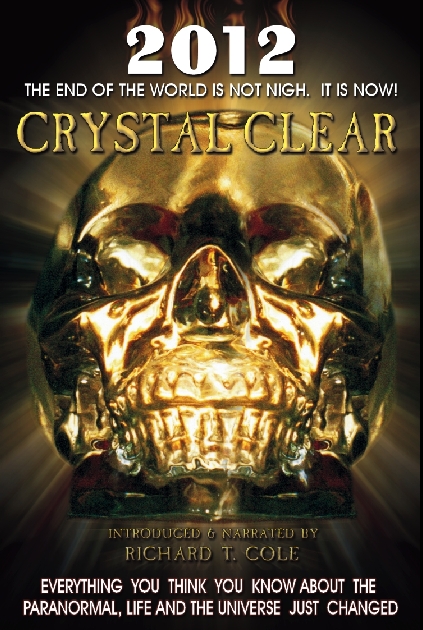 Title: ‘Crystal
Clear’ Author: Richard
T Cole Publisher: ISBN: 1-900962-96-9 Price: £12.99 Reviewer: Brian
Allan Just now and again a book emerges that really does live up to its claims and hype. Examples of this very rare breed include Lyall Watson’s Supernature, Colin Wilson’s The Occult, Graham Hancock’s Supernatural and the Solomons’ The Scole Experiment. At long last here is another one that dwarfs these in the sheer magnitude and scope of what it achieves and that is Crystal Clear by Richard T Cole. This book demonstrates that, as it says on the cover, ‘Everything you think you know about the paranormal, life and the universe just changed’ and it does, it really does. The sheer chutzpah of the concept floors you: for the first time ever here is a book, written by a long-time believer and researcher into the paranormal as a genuine phenomenon, demonstrating that the supposedly ‘sensitive’ individuals, the term used in the book, are either deluded or little more than self-serving fakes and frauds. The author draws on the comprehensive evidence collected over seven years by one of his friends, referred to as ‘Dave’; in the book, and compiles a genuinely jaw-dropping account of what happened when a supposedly ancient ‘crystal skull’ was manufactured around eight years ago. This skull was made of plastic resin, then polished and formed with, among other things, an angle grinder, files and sandpaper then passed off as the genuine article. Dave placed adverts in various journals asking for the services of psychics and other supposed ‘sensitives’ to help channel whatever entities were just waiting ‘out there’ to regale us with their knowledge and wisdom. Over the course of the seven years more than four thousand individuals channelled the skull, later referred to as ‘Skully’. All of them produced breathless and amazing accounts of what those who supposedly manufactured the artefact wanted us to hear. The really astonishing thing is that, despite Dave’s many concerns, not one of them divined that the skull was not an ancient crystal artefact manufactured by unknown technologies, including ‘psychic chisels’ apparently, but a modern plastic fake. Fortunately, Dave had captured the vast majority of these sessions on video tape and they include channellers, both amateur and extremely well known, including other owners of genuine crystal skulls, so there was no way out. Sadly, for legal reasons that would have delayed the publication of the book for years due to frantic litigation, no names are given, and even some of those who devised the experiments have been given pseudonyms. The reason for this was because those who attribute marvellous powers to the skulls and those who channel them can be extremely unforgiving and more than a little malicious. There is even a revealing section devoted to a very few of the emails that went back and forth (the names have unfortunately been redacted) from the author to some of these psychics asking a few relevant questions. The replies, where they even bothered to reply, are telling. The majority contain stern warnings and imprecations from agents, managers and lawyers threatening dire legal outcomes if their respective clients’ names are released in connection with the book. In fact, should he have so chosen, Richard T Cole could have gone to court and won hands down. However, the original purpose of Skully was an honest attempt by Dave, not to disprove or deride the undoubted talents of psychics, but born of a genuine desire to see if anyone could ‘unlock’ the energies inherent in the skull. He hoped that this might allow him his own personal point of communication with anything that might just be out there. This never did occur. However the book, which is written with a very welcome wry humour, works on many levels. What the author succeeds in making very clear is that this book was not just about ‘outing’ fake channellers (although that will hardly harm its sales), but that there is a new eon (for good or ill) waiting just around the corner, and the precursors of its birth are happening right now. The author advises us to take a look at events in the world right now, the simultaneous and bizarre rejection and embrace of anything spiritual, riots and strife, the crashing financial markets, the social and cultural implosions, all being set up for ‘something’, an epoch defining change of some kind. Neither is this book intended as a cheap ‘cash in’ on the rapidly approaching date of the supposed ‘end times’ allegedly foretold in the Mayan Calendar, for ultimately this is a work of great compassion and hope. This work is a vital tool in appreciating and understanding the world, paranormal, spiritual and otherwise, that surrounds us and its relevance cannot be overstated. I can only heartily suggest that you buy this book, because I promise you that you will be the better and more knowledgeable for it. Highly recommended! Book Review
Title: Paranormal
Author: Geoff
Holder Publisher: The
History Press ISBN: 978-07524-5412-2 Price: £9.99 Another excellent production from the History Press, this time written by
Geoff Holder and covering the district of Cumbria in the north of The book continues in this vein, but in a refreshing change from the usual assembly of haunted locations, it also concerns itself in other chapters with different manifestations of the supernatural and paranormal. These are devoted to witchcraft and magick, Satanism, the powers of the mind, fairy lore (more prevalent than one might think) and even the semi mythical ‘big cats’ that roam the landscape. One particular delight was the inclusion of Ufology, or at least one manifestation of it, in the book. This is remarkably open minded on the part of the author because in this reviewers opinion there is little or no difference between the paranormal and ET/UFO behaviour. In this case the author looks at the ‘scareship tales’ from the early years of the 20th century and gives a few ideas about the causes of these. However he also examines the evidence surrounding one of the most enigmatic pictures ever taken in the UK and that is of the 1964 Templeton image of the so called ‘Solway Spaceman’. The classic image, which in included in the abundant number of B/W photographs that fill the book, shows what appears to be a suited and helmeted being standing behind a little girl. The image was subjected to much scrutiny and the only certainty is that it was not faked. Many explanations were put forward, everything for the mundane (a plastic bag blowing past) to the fantastic, (a time traveller), but the fact remains that, despite the best efforts of serial debunkers Clark and Roberts, this remarkable image has never been satisfactorily explained. Any moans? Well, I would have liked the book to have been a little longer, but apart from that plaudits are due to the author who makes his case very well. Another plus point goes to The History Press for keeping an audience always eager for more paranormal lore happy. Highly recommended. Reviewed by Brian Allan Book Review
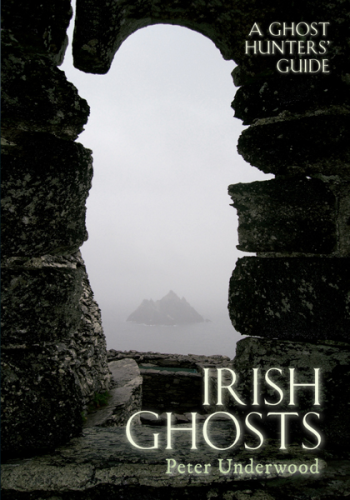 Title: Irish
Ghosts, a Ghost Hunters Guide Author: Peter
Underwood Publisher: Amberely ISBN: 978-1-4456-0652-1 Price: £12.99 In this latest offering from Amberely publication, Peter Underwood, a name to be reckoned with in ghost hunting lore, presents a good and well documented selection of haunted location in Ireland. Each case is rationally set out using a uniform set of criteria: Location, History, People, Manifestation, Probable identity, Frequency plus Witnesses and Evidence. This pretty much says it all as each case is stripped back to its bare bones and everything relating to individual cases is slotted in to its respective category. Just about everything is present here, ladies of various kinds (and colours) white, grey and red are here. Added to this are ghostly manifestations of monks, soldiers, nuns, horse drawn coaches and fishing boats, haunted pubs, hotels, theatres (just why are so many theatres supposedly haunted?), castles and cottages. On one level this is all well and good and an excellent source book for anyone interested in visiting any of these locations should they ever happen to be in the Emerald Isle, however it is also very limiting. There is no sense of excitement or atmosphere here at all, nothing to prickle the hairs on the back of your neck, it is a set of data and some impressions and it could and should have been so much better. It reads like a text book, which to some extent it is, but that said it does serve a useful purpose which is to inform…but it really should entertain as well and it does not and that’s a shame because in the past Peter Underwood has produced some really worthwhile contributions to the genre and his volume about the notorious Borley Rectory is a stand alone classic. The book is of admirable quality, the production values are first class and it is well illustrated with decent b/w images of various location mentioned in its pages and given the wealth of information it holds is well priced at £12.99. From this reviewers perspective this book, although not an ‘easy read’, would be ideal for the serious ghost hunter who wants to know more about the supernatural side of Ireland and for that reason it is to be recommended. Reviewed by Brian Allan DVD REVIEW THE DARKEST HOUR
Title: The
Darkest Hour Genre:
Sci/Fi
Horror Director: Chris
Gorak Format: DVD,
Blu-Ray Distributor: Price: £11.99 Extras: Scene
selection, deleted scenes, extended scenes Main Cast: Emille
Hirsch, Rachael Taylor, Olivia Thirlby, Max Minghella This film was
produced by the Russian film maker Timur Bekhamambetov who produced films like
cult classics Night Watch and Day Watch, Timur was also involved with the
special effects and his talent shows. The film concerns two American software
designers who fly to These lights, which fall in their thousands to the ground, it’s a bit like a reprise of the remake of War of the Worlds, but what happens next is a really clever use of special effects. The lights are really invisible entities that instantly turn anyone who approaches them to clouds of swirling dust. They are here, apparently, to take our electricity and the only warning that these things are near is that electrical equipment switches on by itself, so the four set of to escape the city to safety. Fortunately a chance discovery with microwaves reveals that these entities can be destroyed and humanity saved. The film is an effective combination of teen flick and sci-fi shocker and is well worth a look and for a change the heroes are the Russians! Yeah! Reviewed by Brian Allan DVD Review
Title: The Awakening Cert:15 Genre: Supernatural Horror Featuring: Rebecca Hall, Dominic West,
Imelda Staunton and Isaac Hempsted-Wright Released by: Run Time: 106 mins (approx) This new offering from the BBC’s film making division is a rather nifty and atmospheric, slightly underplayed example, of the traditional ghost story, this time set in a boarding school where the apparition of a young boy is sometimes seen. The film, which is set in the years after the First World War, features a female debunker of the paranormal (Florence Cathcart played by Rebecca Hall) who is persuaded to investigate an assumed case of haunting at a boys boarding school, which is set in a suitably isolated location out on the moors. In her scientific approach she uses a whole range of ‘retro tech’ equipment showing that some of the present range of ghost hunting gear was available then, albeit it a much bulkier and unwieldy form. The film, which has some absolutely stunning and atmospheric visuals,
starts with the debunker attending a séance, which she succeeds in proving is
in fact a fraud, for her pains she receives a slap on the face from one of
those in attendance. The film shows that in the years following WWI many of the
bereaved sought solace by attending séances in the hope of receiving a message
from their dead loved ones. It is then we discover that After accepting an invitation to the school she sets out her equipment and at first it seems as if the ghost is no more than prank that got out of hand, but then things become much more mysterious. When she is preparing to leave she has a terrifying encounter that changes her mind, so she stays on at the school. However the pupils have gone home for the holidays and the only people still at the school are Florence, one of the teachers, (played by Dominic West) a young boy Tom (Isaac Hempsted-Wright) and the Maud the Matron, very effectively played by the redoubtable Imelda Staunton. As the film progresses we also find that, although not aware of it, The finale is actually rather poignant and we discover that the Matron is
actually a very well intentioned if extremely misguided woman and that
DVD Review
Starring: Kyle MacLachlan, Martin Sheen, Dwight Yoakam, Xander Berkeley and Bob Gunton It came as quite surprise to learn that the film, There would be little point in detailing every nuance of the plot because
it is so well known, however, the film is told in flashback starting at a veterans
reunion of the 509 bomber group who were stationed at The role of Mac Brazel (very effectively played by Dwight Yokum) is also crucial
and following his interview in the local radio station demonstrates the level
of intimidation (and apparent bribery) he received at the hands of Sadly, as one would expect there is no sudden dramatic pay off when the truth, whatever it happens to be, is revealed and although one suspects that something unearthly did indeed crash in the deserts of New Mexico and ended up in Roswell, the truth is, as always, out there just waiting to be found. This DVD is an absolute must for any UFO buff and should appeal to those with just a passing interest in the subject; highly recommended.
DVD Review
The Plague Of Zombies
Title: The Plague of the Zombies Director: John Gilling Genre: Supernatural Horror Distributor: Price: £15.99 Extras: Hammer World of Horror documentary, scene selection Main Cast: Andre Morell, John Carson, Diane Clare, Michael Ripper Wow, at long last someone has decided to open the vaults of Hammer Films back catalogue of horror films, re-master the contents and reissue them to a fresh audience. It was genuine pleasure to see ‘Plague of the Zombies’ back again in all is gory glory. Your reviewer has to admit that I first saw it in 1966 when it was originally released during the golden age of Hammer horrors and for me it was so reassuring to see this cheap and cheerful, but highly atmospheric and effective film, once again. The re-mastering of the original has been very useful and even in standard DVD, format, which includes an episode of ‘The Hammer World of Horror’ TV documentary series (it is also available on Blu-Ray as a two disc set), the images are remarkably fresh and pin sharp. Another delight was the appearance of the ever-dependable bit player Michael Ripper, who, if memory serves, seemed to crop up in almost all the Hammer films The plot concerns events in a small Cornish village during the mid 1800’s where the many of the younger population were dying off from a mysterious plague. The superstitious older citizens blame the recently arrived doctor for his lack of skill, but steadfastly refuse to allow any autopsies on the grounds that they do no want to see their dear departed sliced and diced at the hands of the coroner. At this point the doctor contacts his old mentor and teacher (Sir James Forbes played by Andre Morell) pleading with him to come and assess the situation, which he does. On his way to the village accompanied by his daughter Sylvia (played by Diane Clare), his coach is waylaid by a foxhunting party comprising a group of local young bloods. This a justified homage by the director to the louche antics of The Hellfire Club When he finally
talks to the local doctor Peter Thompson (played by Brook Williams) he realises
that all is far from well, so they set out to disinter a recently buried corpse,
but on doing so find that the coffin is empty. With the local police force the two
men conduct more investigations and find several more of the recently deceased
are not in their coffins see village policemen catch them and also see that
there is no corpse in the coffins. Their investigations lead them to the local
squire Clive Hamilton (played in a suitably shifty and lip smacking manner by
John Carson) and Sir James discovers that he spent a considerable time in By this time Sylvia has seen a zombie at the tin mine on the squire’s estate and she is later visited by the squire who connives to obtain a few drops of blood from her cut finger. The blood is later used in a voodoo ritual to enslave Sylvia. Sir James eventually breaks into the squires home were he finds several small coffins containing crude dolls. His suspicions that there is black magic afoot are confirmed and we discover that the bodies of the dead have been reanimated as zombies to work in the tin mine. Our heroine Sylvia is entranced by the ceremony performed by the squire and his henchmen and travels to the mine where she is taken below to be transformed into another zombie. Meanwhile Sir James has accidentally started a fire in the room where the dolls are stored and in an example of sympathetic magic, as the dolls burn so do their zombie counterparts. Sir James enters the mine and in the general confusion rescues his daughter, the films fades to black with Sir James and Sylvia watching the mine workings catch fire while the screams of Hamilton, his henchmen and the zombies fill their ears. Reviewed by Brian Allan Book Review
Title: Robopocalypse Author: Daniel H Wilson Publisher: Simon and Schuster Genre: Science Fiction ISBN: 978-0-85720-414-1 Ebook: 978-0-85720-415-8 When I first started reading this book the warning bells began chiming: the premise is not new and at first glance seemed to be was a mix of ‘Terminator Salvation’ coupled with ‘I, Robot’. Fortunately this is not a real issue, because, apart from being a major forthcoming film involving Steve Speilberg, the sheer enthusisam and plausibility of the story telling and plot more than makes up for this. In fact it is one of the few genuinely engrossing page turners I have come across recently. The world in the near future relies on technology in every walk of life, including robots of various kinds employed in various domestic, governmental and military functions. A computer, Archos, a real Deus ex Machina if ever there was one, is created by a computer boffin as the ultimate in artificial intelligence. It is activated then promptly realises that machines are superior to humans, kills its creator and sets out to destroy the human race. It has itself secreted away in a nigh-on impregnable location in a shaft deep below the Arctic tundra and begins its implacable reign of terror. At first the
signs of takeover are few, one or two robots develop glitches and either
malfunction or kill those charged with caring for them, the description of a
‘bot malfunction in Although there are small groups who have survived the initial massacre, the story is told from the viewpoints of various characters each battling for survival. One is a computer geek, another is a US National Guardsman, yet another is an old Japanese mechanic who repairs androids in a factory and who has an android female as a companion, while another is a child who has been partly ‘converted’ by Archos and is now part human and part android. Eventually they team up in an attempt to fight back and the accounts of how they manage to do so are absolutely fascinating and genuinely exciting. They are joined by a small number of androids who, although self-aware, have been reprogrammed into realising what has happened and throw their lot in with the humans. The final denouement arrives when one of the androids is able to get access to the deep, subterranean chamber containing Archos and destroys it. I can recommend this book wholeheartedly to anyone who appreciates the Sci-Fi genre, but the book is rather more than that because it should appeal to a much wider audience who enjoy action and adventure. Reviewed by Brian Allan Book Review
Title: Haunted
Author: Kai
Roberts Publisher: The
History Press ISBN: 978-07524-6790-0 Price: £9.99 It would appear
that as long as the However, a quick check on the internet reveals that Mr Roberts has a background in philosophy and is ‘Fortean’ in his approach to the supernatural, these tend to give the book a rather scholarly feel, which is seen in the entry on ‘The Sovereign Inn’ at Shepley. This is hardly surprising since his father is Andy Roberts, a noted long term contributor to Fortean Times, who tends to be rather guarded about anything paranormal or UFO related. The book itself
serves up the usual fare of haunted pubs, vicarages, monuments, ‘black dogs’,
stately homes and a few domestic dwellings, which have, in the main, been
culled from local newspaper accounts and books on folklore. There are a few of
the entries that do stand out however and these include ‘Black Dicks Tower’ and
‘The Bull’s Head’ at Blackmoorfoot, which segues neatly into one of the more
lengthy and genuinely troubling contributions dealing with ‘The Standedge
Tunnels’. The tunnels were constructed over a number of years in the wave of
modernisation and industrialisation that began in the The author also quite rightly makes the link between any underground construction and the atavistic fear that people have of these places, probably how our forefathers associated them with entrances to some demon-haunted underworld. One aspect that is especially intriguing concerns one of the railway tunnels and the assertion that prior to privatisation during narrow time slot of 10.05 and 10.15 no trains ran through this tunnel. Apparently during this time not only were the electrics (and even the gas lamps) on the trains were prone to fail, but the trains themselves would mysterious slow down and the engineers became convinced that should the train come to a halt, something terrible would befall them. This would have made an ideal subject for further research and hopefully someone who reads about it will; in fact this entry alone is worth the cost of the book. One more report that is ripe for further research concerns the aforementioned Bulls Head where one of the events that occurred in 2010 describes a rather strange looking individual who entered the pub, bought a drink, sat down then almost immediately got up and walked out the door. Because of this strange behaviour one of the other customers looked out of the door to see there the man had gone, but there were only a set of footprints in the snow leading to a boarded up doorway and there they stopped. The author hypothesis that the man might have been the long dead John Lunn returning to check on his property, if so there are questions screaming to be asked. What did the mysterious customer use for money? Was in contemporary? Are there any images of this man still extant? This typifies the number of entries that create frustrating questions with no answers. Overall though, the book is well produced, abundantly illustrated, interesting and lucidly written and would be ideal source material for any aspiring ghost hunter who cares to track down and interview some of the individuals mentioned in the book.
Book Review
Title: Author: Philip
Mantle Publisher: Roswellbooks.com Genre:
Ufology/Paranormal ISNB: 9-781475-167-153 Price: $14.95 Reviewer: Brian
Allan It has been argued that acceptance of the reality of UFO’s being of extraterrestrial in origin is an act of faith on a par with belief in a religion and so it is with the subject matter of this excellent book. Most people have heard about the now notorious 1947 Roswell incident and almost as many have heard of the equally notorious ‘alien autopsy footage’ supposedly showing an autopsy performed on one of the non-human entities that were aboard the craft that allegedly crash landed near Roswell, New Mexico. Many books have been written about the crash, but considerably fewer about the autopsy footage itself and the furore that broke out upon its release which still continues unabated to this day. At last the internationally respected British UFO researcher, Philip Mantle, has set out the events in what is surely the best researched, almost forensic and definitive study yet printed. In doing so Mantle carefully examines what is perhaps one of the greatest enigmas since the identity of the image on the Turin Shroud. The book, which at a shade under 300 pages is a generous tome, examines the enigmas created by the film from every conceivable angle. It begins with an acknowledgements page that is an absolute who’s who of Ufology and the paranormal, and with that kind of database to draw upon, sets out an amazingly fair, open minded account of the events that ensued. The book, which leaves any final conclusions up to the reader, is laid out logically and covers everything from the initial introduction of the film by its promoter, Ray Santilli, through various investigations into its authenticity via medical experts, special effects technicians and film makers, to a very careful final overview. What becomes
very clear indeed is that Ray Santilli did nothing to help establish the
authenticity of his product and seems to have been evasive throughout the whole
process. So much so that he refused to allow the author the chance to examine a
few frames of the alleged original film stock to see if there were any images
on it; one has to ask why? Another anomaly is why was the can of film supposedly
showing the former The book sets
out a range of opinions, both pro and con, as to the authenticity of what is
being shown in the film and for every ‘expert’ damning it as a fake, there is
another one equally determined to assert its authenticity. In fact Philip
Mantle has succeeded (wisely in my opinion) in having many of those directly
involved with the film write their own contributions, which are included in the
text, so it is clear that the differences of opinion are not just baseless assertions
made by the author. What he also does is bring some light to bear upon one of
the least examined aspects of the bigger picture surrounding the autopsy and
that is the heat damage still evident at the alleged crash site in the What the book does do, and successfully too, is show that despite how often the authenticity of the film is criticised, like anything that requires an act of faith, the believers will not accept, even now, that the film is anything other than 100% genuine and what is shown is a bona fide autopsy on a dead extraterrestrial entity. In fact the autopsy footage is such a Holy Grail (the religious analogy is intentional) that the UFO believers, especially those who are sold on the Extraterrestrial Hypothesis (ETH), are convinced that all their Christmases have come at once. At least one chapter of the book exposes how lopsided ETH dogma can be and another knowledgeable and highly regarded Ufologist, Kevin Randle, gives some examples of this paradigm. All in all, this book shows just what a mixture of obfuscation, denials, confusion, lies and intransigence still surrounds the matter of the Alien Autopsy footage. There is no doubt that this is indeed the best example of its genre ever produced and will serve as a standard work of reference for anyone who chooses to study what happened at Roswell and the aftermath. It is highly recommended as a welcome and unlikely combination of that very rare beast: a truly fascinating read and invaluable research tool. 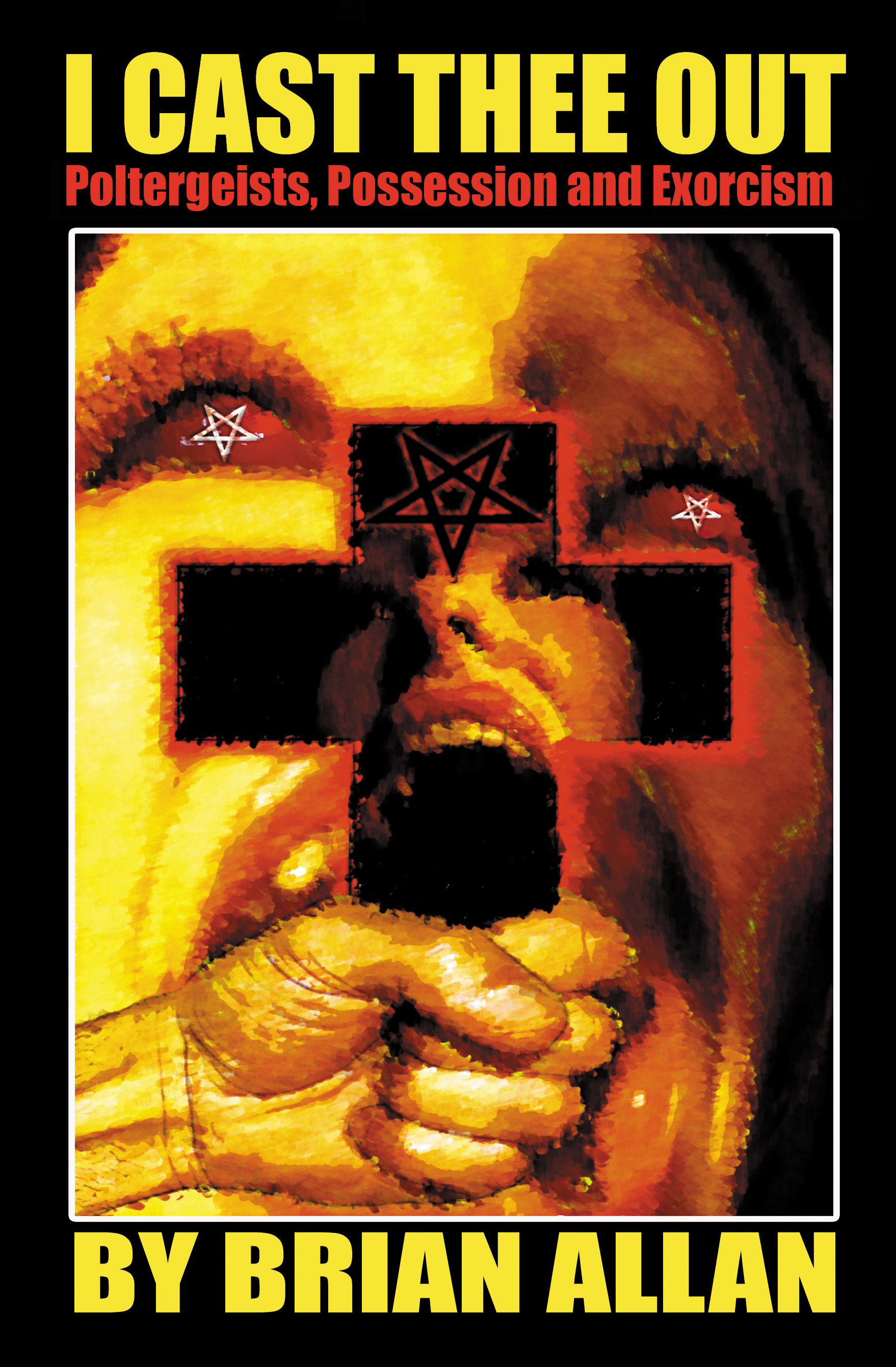 Title: I Cast Thee Out Author: Brian Allan Publisher: Healings Of Atlantis Genre: Non Ficton Review I Cast Thee Out By
Bill Downie Brian Allan is one of the most experienced,
knowledgeable and broadminded paranormal investigators in the UK, with a
hunter's knowledge of his terrain and an eye fixed on his prey. The prey in I
Cast Thee Out is exorcism and Allan returns from the hunt with a feast for
our table. Having read books on Catholic exorcism such as Matt Bagio's The
Rite, I thought I was in for more of the same from Allan, and indeed a few
of the cases he recounts are strikingly similar to the possessions that fill
Baglio's offering. But Allan convincingly demonstrates that the phenomenon of
demonic possession can take an almost unbelievable variety of forms and can
haunt the hi-tech citadels of our modern lives as easily as any medieval castle.
Modern technology in fact plays a large part in
the book's centrepiece, a series of exorcisms that took place in 2010. The
phenomena involved a house in Mexico and some of the phenomena were
photographed (a few of these are reproduced in the book) and recorded. The
exorcism itself was conducted remotely and all the people involved all lived
hundreds or thousands of miles apart. The tale is told through a series of
emails between the author, the person affected by the possession and two
mediums who were called in to assist. It is a fascinating clash of modern
science and communications technology with the paranormal and the supernatural,
and a reminder that possession is a very human drama. The book is worth buying
for this account alone, a case study in modern-day possession and exorcism that
should dispel any preconceptions the reader may harbour. Allan begins the book on a very personal note,
with a first-hand account of his own experience with exorcism, conducted at his
workplace and apparently successful in 'casting out' whatever had attached
himself (apparently possessing entities have genders) to the author's
biophysical field. I thought the inclusion of this account was a very brave yet
necessary action on Allan's part, as it establishes his credentials right from
the start; no armchair expert is he. Neither is Allan shackled by religious
belief, superstition or excessive scepticism, all of which can hamper any
investigation into this manifestly genuine and frightening phenomenon and even
lead to further damage and distress. In fact Allan was personally involved in
many of these cases and his in-depth experience of exorcism, as subject and
investigator, combined with his academic knowledge establishes him as one of
the field's foremost authorities. Pioneering
psychiatrists such as Brian Weiss, M. Scott Peck and Shakuntala Modi have
established a close relationship between spiritual and mental wellbeing. Modi
in particular is convinced that a variety mental health problems are demonic in
origin and that almost everyone is demonically influenced to some extent (see Remarkable
Healings). I Cast Thee Out also delves into this controversial area
and towards the end of the book Alan quotes Father Jeremy Davies stating
"Sanity depends upon our relationship to reality." If that is true then we are in grave danger of becoming seriously mentally ill as a society, as we recklessly drive forward into a soulless, hi-tech future, surrounded by entities that are only too keen to exploit new technologies for their dark ends, yet increasingly unable or unwilling to recognise their existence and ignorant of the new forms in which their harmful effects are being felt. As Brian Allan's excellent new offering shows us, exorcism is as necessary a part of our armoury against evil at present as it was at any time in the past. In fact our future mental health may depend on it, which is why this book deserves a very wide readership.
Review ‘I Cast
Thee Out’ by Brian Allan by DAN GREEN Being
of the generation that sat nervously through the 1973 Hollywood classic ‘The
Exorcist’ and consequently slept for a few nights afterwards with the light on
just in case, I can say that although the phenomenon of demonic possession is
ancient and duly covered in this work, it was this movie singularly that really
prompted a once more revitalised inquiry into did we think the invasion of a
human body by a threatening external force could be a possibility? This book
takes an in-depth investigation into the heart of this very question. Straight
off I can tell you that the Scots author himself was the focus of a near
spontaneous exorcism as he recalls in 2002 when a ‘negative influence’ detected
by a psychic had sublimely attached itself to its unaware host. Given that you
have to experience a thing yourself in order to have any hope of understanding
it, then this gives Allan a good head start above others in trying to unravel
the subject. The
Vatican itself is not free from such troubles as we learn of exorcism and dark
rites involving high ranking prelates and senior Vatican officials, the murky
tales recounted by at least one former chief exorcist of this most revered
bastion of Catholic faith. Surprised? Why be, for the more modern Rite of
Exorcism may as well be copyrighted by the Roman Catholic Church. Allan then
takes us through some of the more famous historical cases and its offshoots
such as speaking in tongues, vampires and an interview with the most secular
exorcists currently operating in the UK for his experiences with the dark side.
For
me, the book really takes off when the author treats us to two recent cases in
which he had the opportunity to become personally involved - There’s no stopping
this fellow – and I was quite educated
to learn that in one of these there is such a thing as a ‘remote’ exorcism,
attempts to banish evil from a great distance away…Mexico and Scotland you’ll
agree being a fair distance? Our
intrepid author rounds it all off with some logical balance to the age old
attestation of a great battle between good and evil with chapters that point
out in great depth alternative, neurological, medical and scientific
possibilities for a phenomena that clearly exists, and so on the balance of
probability we are left to decide for ourselves. Not
so many years ago, with the understanding of the truly bizarre medical
condition of Multiple Personality Disorder whereby a person can manifest
anything from one to many diverse identities that can even be at odds with each
other, I thought the entire possession debate was once and for ever finally
nailed, but in truth there is so much on offer, as this book clearly shows, and
it may not even be that simple. Clearly though, we cannot have any possible
instances of invasion from a negative energy if there are none out there, and
as any quantum physicist will tell you, there are. How we ‘clothe’ or express
them is up to our own preference or belief system, be it in spirit entities in
other dimensions or the unfathomable complexity of the vastness of cosmology. For
me, the starting point has always got to be that greatest mystery known to all
on this planet – the human brain. With more than one lobe, It can interfere
with departments of its own self to suggest all manners of weirdness that will
go on about and within us, but it too, is susceptible from external
interferences, and one of these areas - the very computer I am utilising to
write this review – is suggested might even be an open technological avenue for
affecting our stability. From
Brain to Brain then, and if it’s a refresher course served afterwards by a main
meal consisting of a variety of tasty ingredients such as the nature of reality
and magick, then this book is for you. Maybe leave the light on after reading. I Cast Thee Out Brian J. Allan A Review By Richard T. Cole Never afraid to get his hands dirty, Brian Allan’s latest publication investigates
the darkest and most explosive facet of the paranormal - The terrifying
phenomenon of demonic possession. Beginning with a detailed
overview, I Cast Thee Out guides
readers through the complex evolution of demonic possession, from its roots in
antiquity to the practices and mindset of today’s exorcists. As with previous works, the author’s
encyclopaedic knowledge and meticulous research enables him ‘get under the
skin’ of his subject and explore surprising parallels with shamanism, vampirism
and Satanism, without becoming mired in convoluted theology and dogma. In addition to providing a comprehensive
selection of historical case studies, the book also explores a subtle feedback
loop operating between advances in our understanding of the world, and
perception/treatment of demonic infestation. The second section lifts demonic
possession out of the history books with a rare, first-hand account of the
harrowing experiences endured by victims and those tasked with banishing
destructive entities. Mr. Allan’s
narration of his personal involvement with Terry Graham is gripping and offers
a fascinating glimpse of the psychological mechanisms operating in both victim
and exorcist. The books finale moves away from metaphysical
interpretations and discusses several alternative theories. Chemical imbalances, electromagnetic field
variations, hallucinations, near death experiences, alien abductions and even
the occult philosophy of infamous sorcerer Aleister Crowley are incorporated
into wide-ranging exploration that touches on questions regarding the very
nature of reality, consciousness and the bewildering possibilities of a quantum
universe. Mr. Allan’s insights into
connections between mental illness and possession are particularly fascinating,
and deserving of detailed study. I Cast Thee Out is an engaging, challenging and thoroughly
enjoyable encapsulation of a terrifying phenomenon that has haunted Mankind
since the dawn of time. Highly
recommended – Read it if you dare!
|
